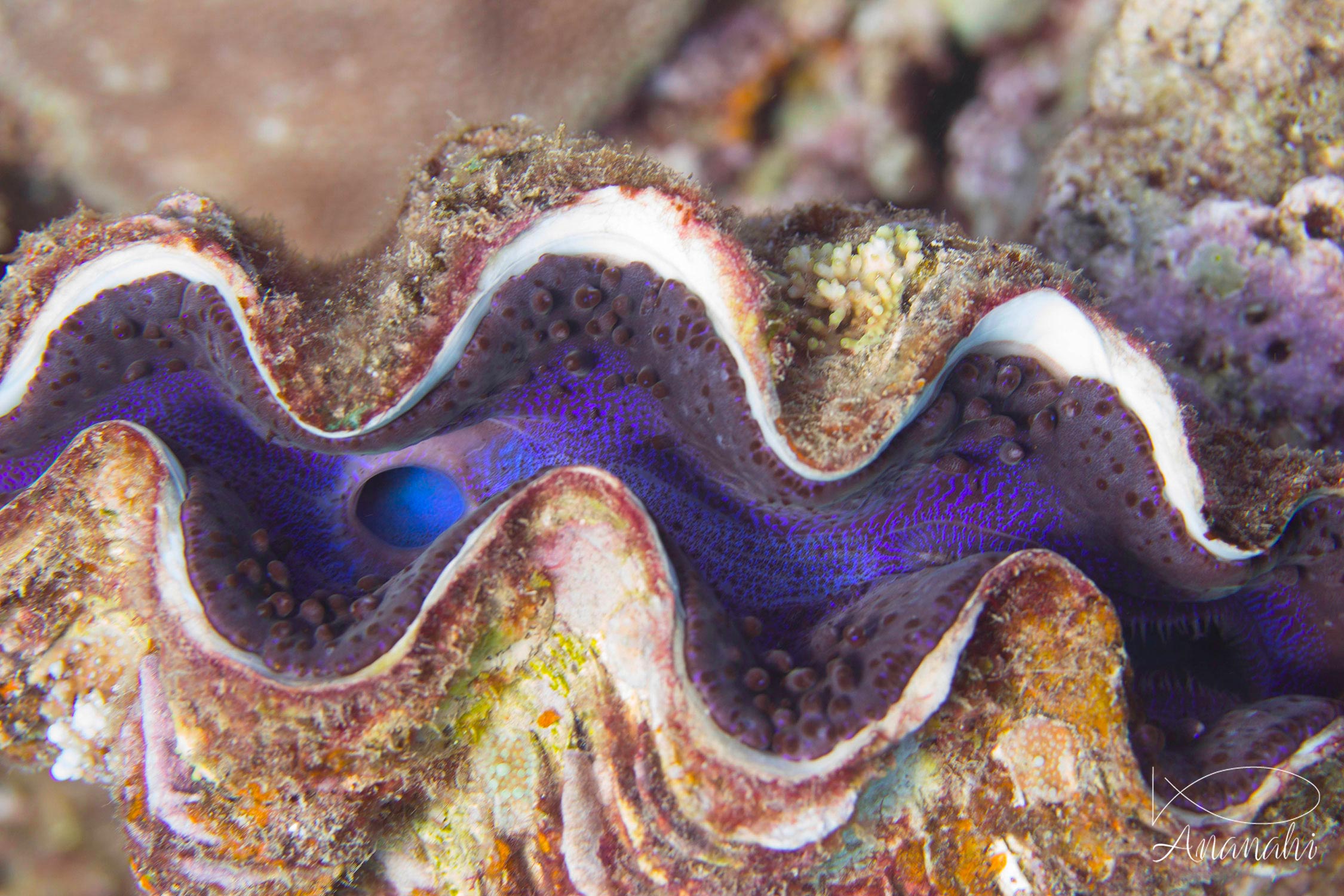
Scientific name: Tridacna maxima
Size: Up to 24 inches
Color: Colorful (blue, green, purple)
Distinguishing feature: Asymmetrical white shell and elongated with a lateral view. Possessing generally 5 (up to 7) ribs. Many short and tight scales. Skin wide and often blue.
Where did we see it: Bali and Gili, Zanzibar, Thailand, French polynesia, Mayotte, Maldives, Raja Ampat, Egypt

Scientific name: Tridacna maxima
Size: Up to 24 inches
Color: Colorful (blue, green, purple)
Distinguishing feature: Asymmetrical white shell and elongated with a lateral view. Possessing generally 5 (up to 7) ribs. Many short and tight scales. Skin wide and often blue.
Where did we see it: Bali and Gili, Zanzibar, Thailand, French polynesia, Mayotte, Maldives, Raja Ampat, Egypt
During the day, he lets appear his skin to ensure photosynthesis.
It is able to close it shell very quickly, breaking anything that would find half in the shell.
It's a species that is on the red list, particularly because of the consumption of its flesh, which is now prohibited for sale.
The kakihona sushi (sushi wrapped in persimmon leaves) are really the best!
To eat them, you have to go to Nara!
Some sharks can stay motionless on the sand (white tips reef sharks, nurse sharks, etc.).
These sharks don't have to swim to bring oxygen to their gills like other sharks (grey, hammerheads tc.)
Mammals have a horizontal tail.
Fishes have a vertical fin.